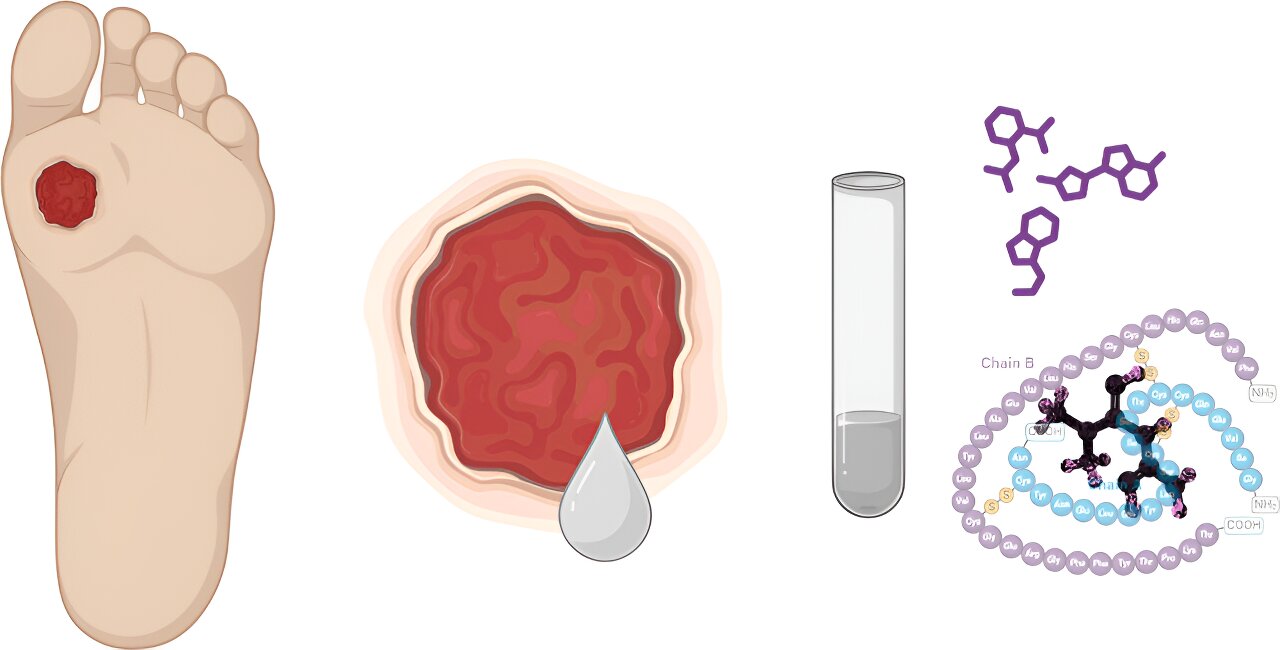
People with chronic diabetic foot ulcers could soon have a new way to treat their wounds for faster healing and fewer hospital stays. Researchers from Michigan State University and South Shore Hospital have uncovered that the combination of two common diabetes drugs—injectable insulin and orally-administered metformin—increases the amount of metformin at the wound site. As metformin can accelerate wound healing, this could be welcome news for the 18.6 million people worldwide (1.6 million in the U.S.) who develop a diabetic foot ulcer, or DFU, in their lifetimes.
“We collected human exudates from diabetic foot ulcers and analyzed their composition,” said Morteza Mahmoudi, an associate professor in the Department of Radiology and Precision Health Program in the MSU College of Human Medicine. “One of the things that we noticed in the composition of the exudates—which has not been observed anywhere else—was the presence of metformin.
“Until now, pharmacological studies had not found an interaction between insulin and metformin,” he added. “Our study shows that there could be at least an indirect role of consuming both insulin and metformin in a way that metformin can end up in a wound area where it enhances the body’s capacity to heal.”
Mahmoudi and co-researcher Lisa Gould, a plastic surgeon and wound care clinician at South Shore Hospital and a clinical associate professor of medicine at Brown University, recently published a paper in ACS Pharmacology and Translational Science that details the previously unheard of connection between insulin and metformin in DFU exudates.
“Our findings can affect the way that clinicians approach healing chronic wounds,” Mahmoudi said. “For example, if a patient gets a wound, the synergistic role of insulin and metformin could be helpful.
“Additionally, wound dressing developers need to consider the interactions of anything they put on top of wounds with exudates,” he continued. “Exudates can interact with the wound dressings and affect their safety and therapeutic efficacy. Additional research will be evaluating this.”
More information:
Lisa Gould et al, Analysis of Biogenic Amines and Small Molecule Metabolites in Human Diabetic Wound Ulcer Exudate, ACS Pharmacology & Translational Science (2024). DOI: 10.1021/acsptsci.4c00418
Citation:
Insulin and metformin combo aids diabetic foot ulcer healing, new study finds (2024, September 4)
retrieved 6 September 2024
from https://medicalxpress.com/news/2024-09-insulin-metformin-combo-aids-diabetic.html
This document is subject to copyright. Apart from any fair dealing for the purpose of private study or research, no
part may be reproduced without the written permission. The content is provided for information purposes only.


